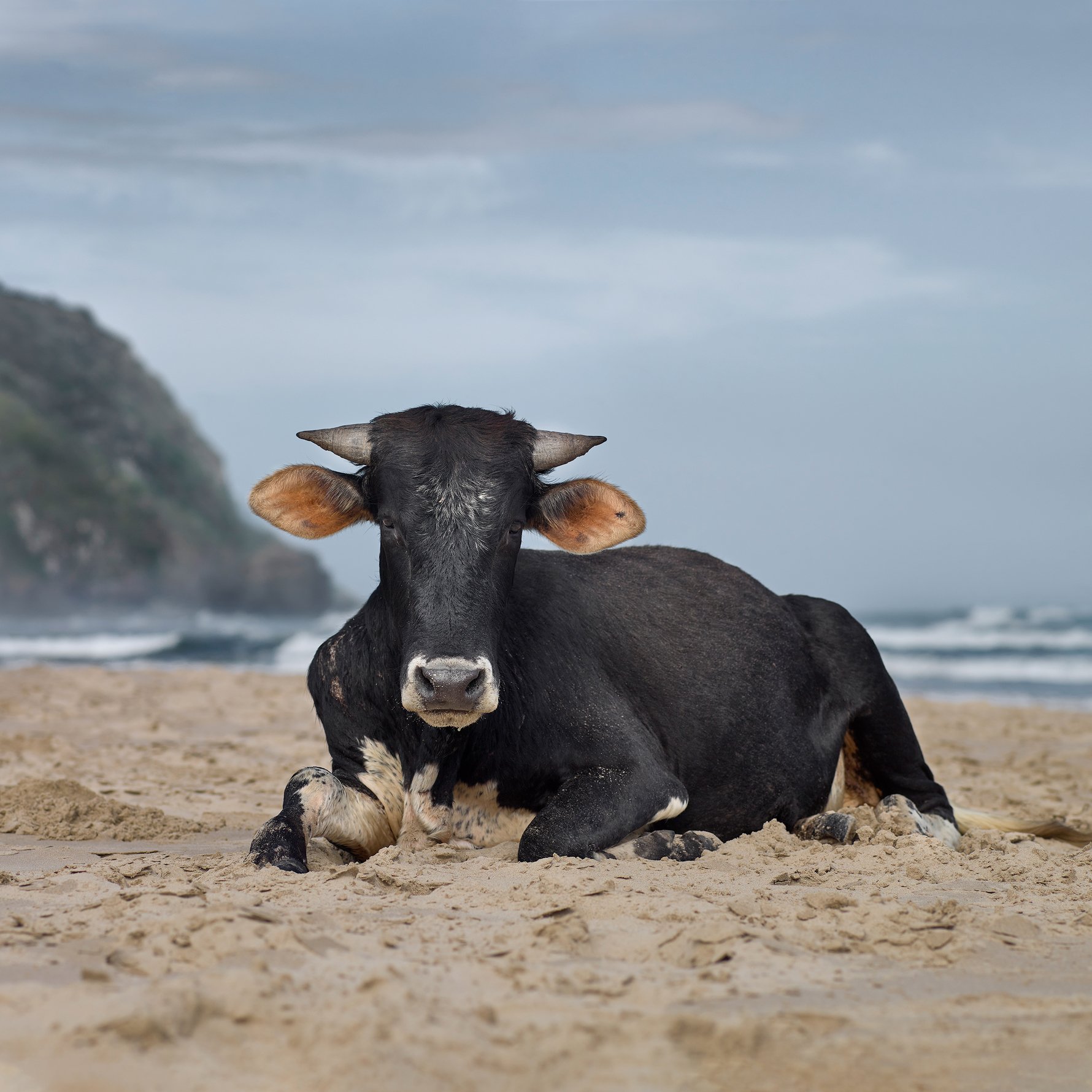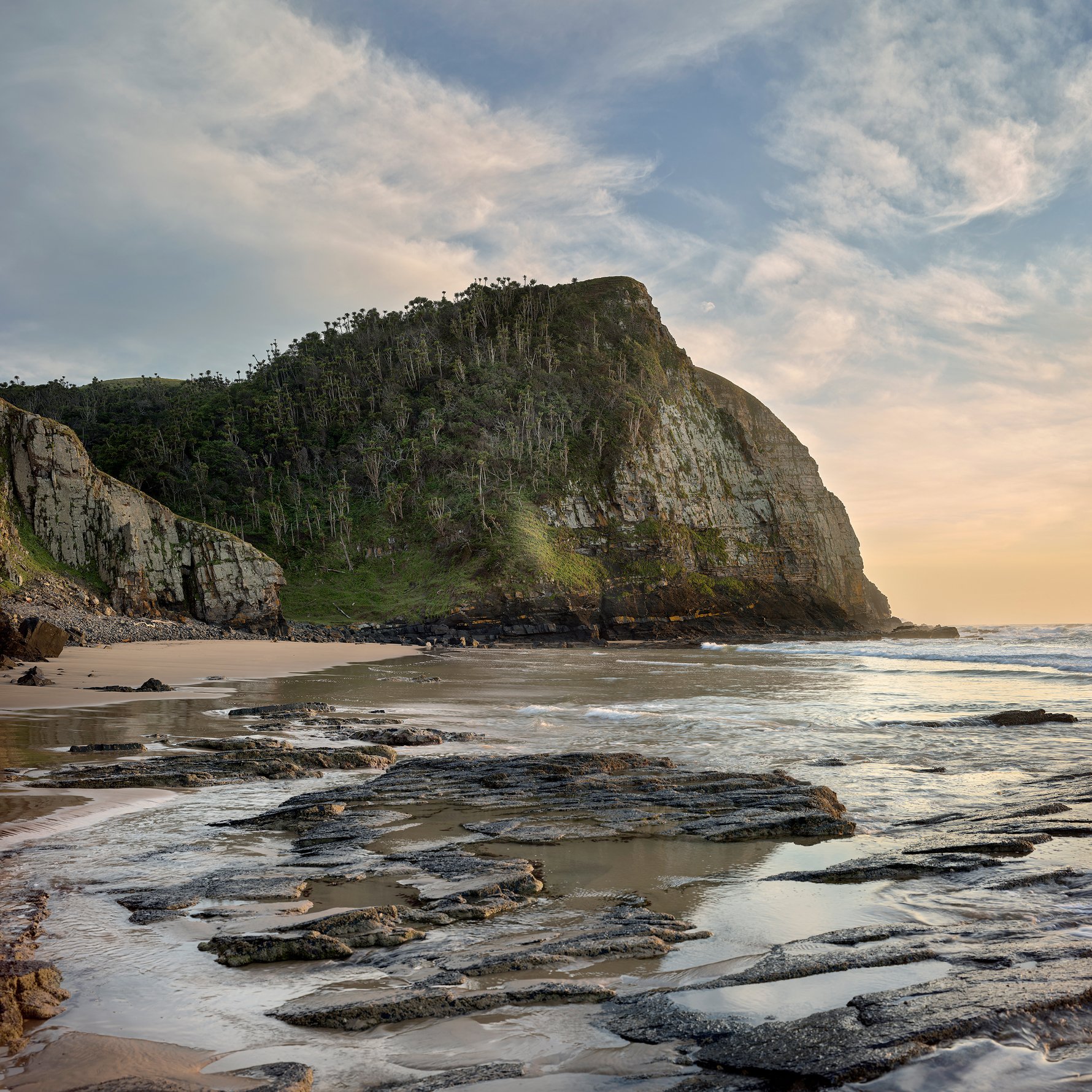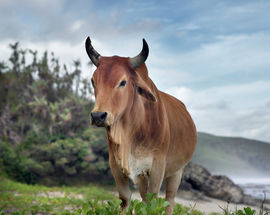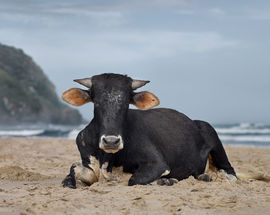Recording portraits of cattle requires incredible patience. Waiting for a particular animal to be in just the right place at the right time, and for the weather and the surrounding landscape to also play its role. The magic of these portraits is Naudé's ability to capture the exact moment of recognition between the subject and photographer. The animals look expressively and directly into the lens.
Naudé explains it is precisely these moments where you can sense the animals range of expressions that he is most interested in, "some may be tender and dreamy, while others will confront you with a direct stare that is challenging and aggressive".

From Bovine Prophecy by Daniel Naudé
Cattle and their role in society have left an indelible mark on the history of the Eastern Cape. After Dutch settlers brought Friesland cattle to the area (which subsequently spread bovine lung disease), the prophetess Nongqawuse spoke to her Xhosa ancestors in 1856. According to her visions from the ancestors, the Xhosa people should slaughter all their cattle and destroy their crops. As the legends told the dead of the Xhosa nation would then rise from the sea, bringing with them new, uncontaminated cattle. After the destruction, the prophecy did not come to pass and an estimated 40 000 people from the Xhosa nation died of starvation.

From Bovine Prophecy by Daniel Naudé
In these images the landscape also serves as a reminder of the enigmatic and emotional nature of the cattle, and their position within our human stories.
As Naude explains; "Animals do not pose, they merely exist. We attach meaning to animals, we read them as the carriers of our stories. And yet our own existence depends on them and we cannot live without them... That, I would argue, is exactly the tie that binds us to history and makes the story of Nongqawuse so relevant to the contemporary moment. Never has our relationship with the natural world been in so much need of critical intervention".



.-HR-300dpi_m.jpg)


